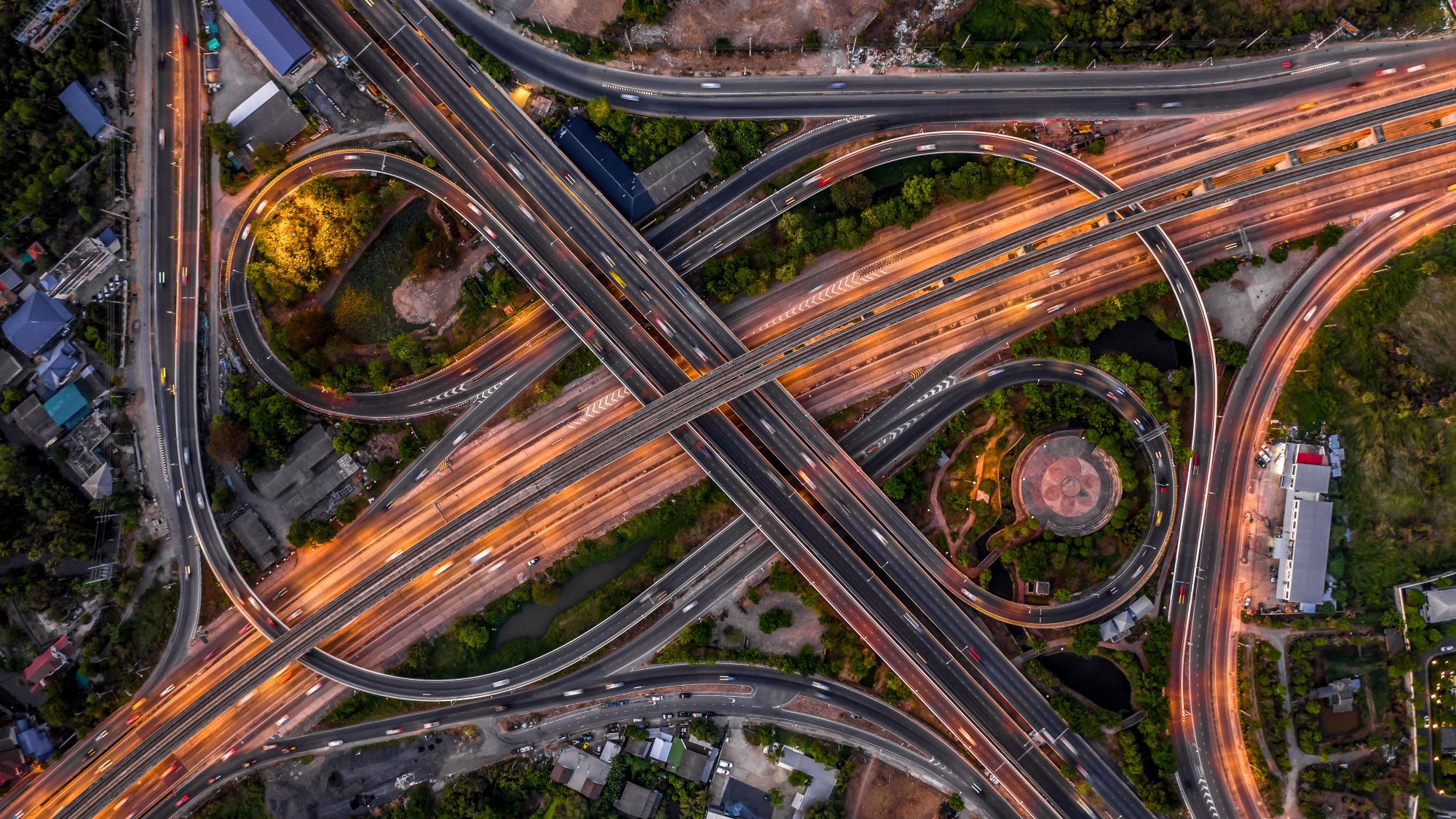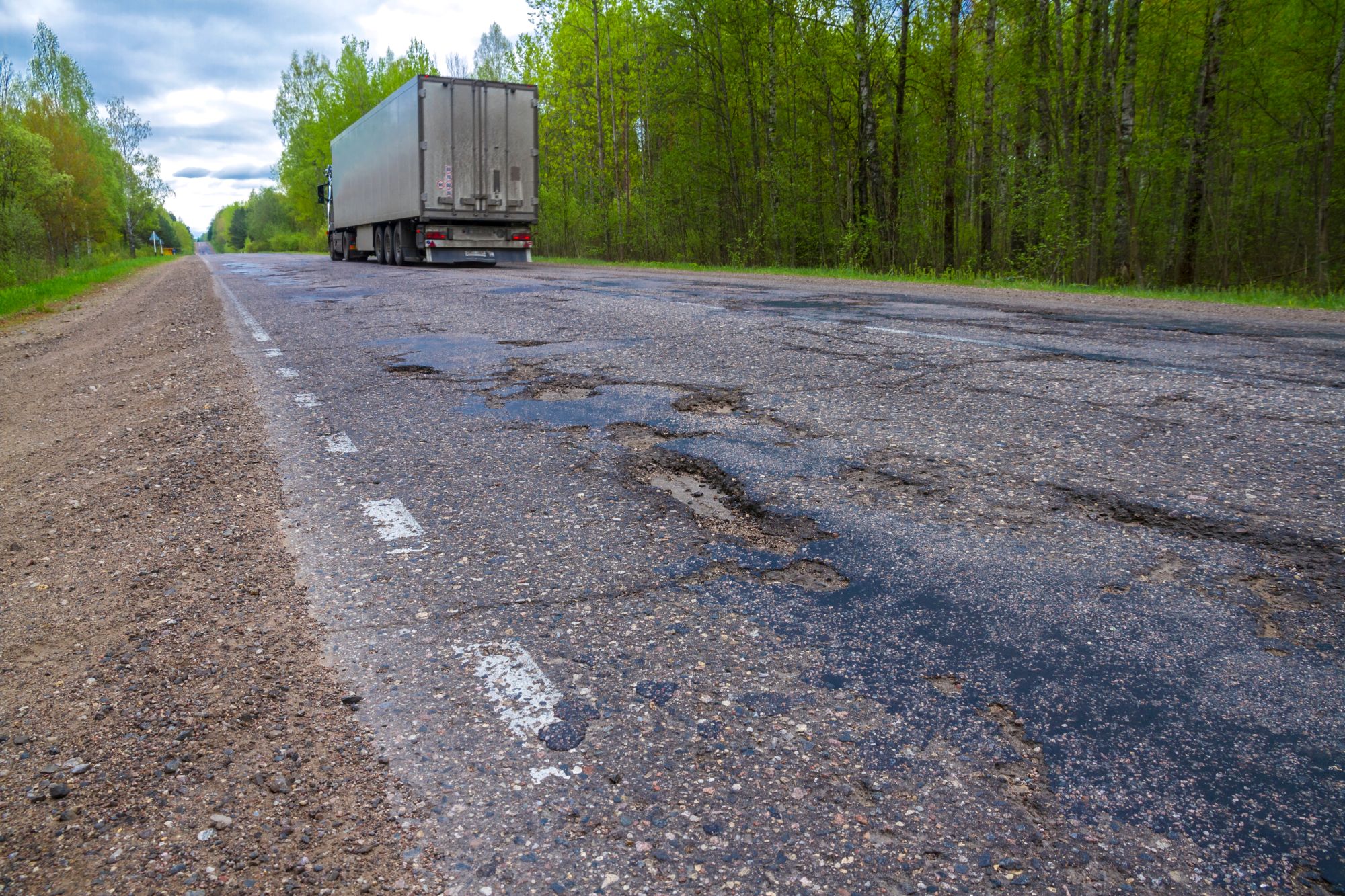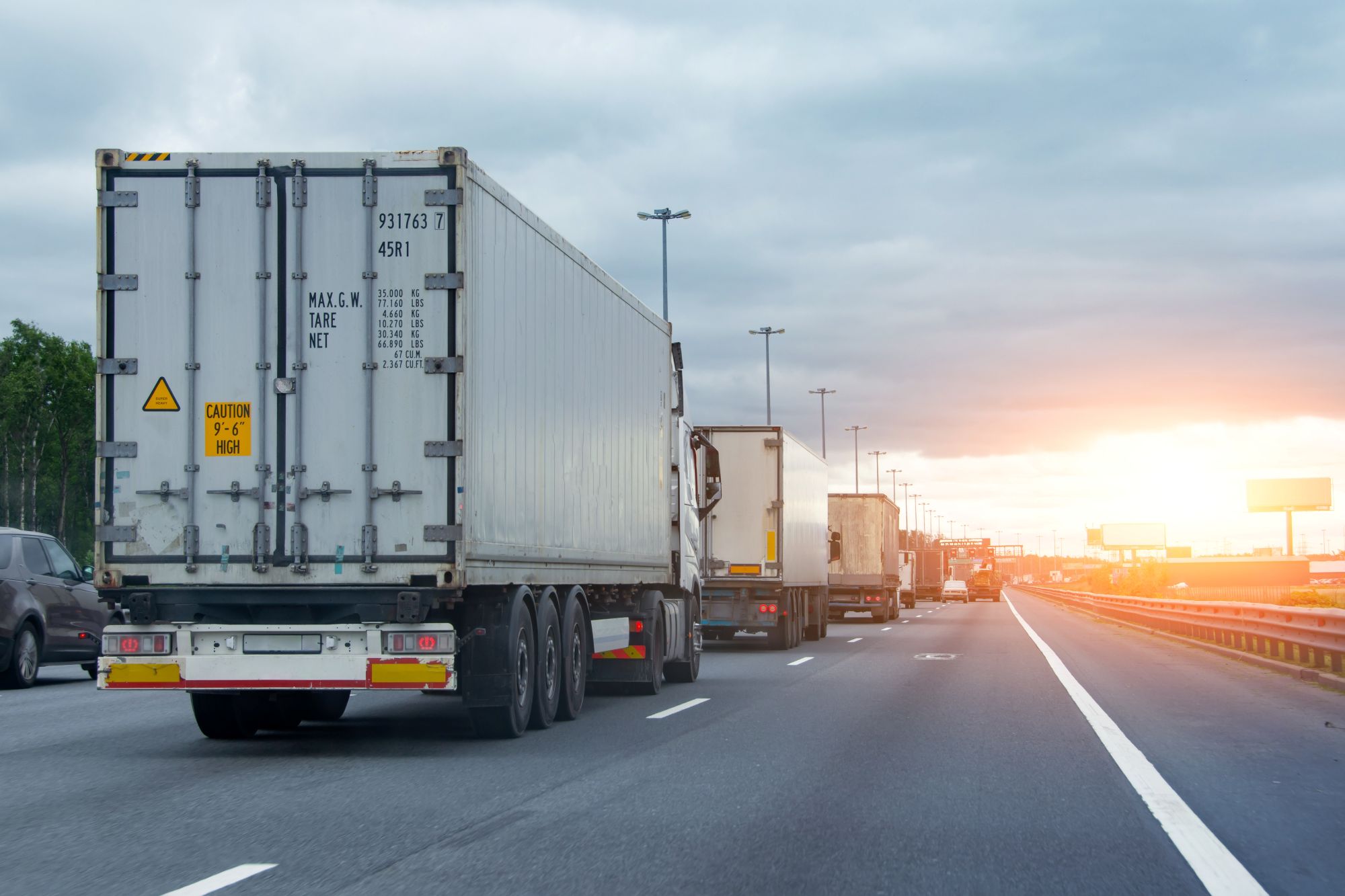
Guest
Wie sich die britische Infrastrukturfinanzierung auf die Mobilitätsbranche auswirken könnte
Erstellt: 02.07.2025
•
Aktualisiert: 03.07.2025
Nach Jahren lückenhafter Investitionen und zunehmender Staus hat sich die britische Regierung verpflichtet, in den nächsten zehn Jahren mehr als 700 Milliarden Pfund in die Infrastruktur zu investieren - ein Großteil davon ist für die Straßen des Landes vorgesehen. Von neuen Güterverkehrskorridoren bis hin zu hochmodernen digitalen Verkehrssystemen - die Auswirkungen der 10-Jahres-Infrastrukturstrategie auf die Berufskraftfahrer und die Mobilitätsbranche im Allgemeinen könnten einen Wandel bewirken.
Straßen erreichen die Belastungsgrenze
Die Straßen sind nur ein Teil des britischen Verkehrssystems - aber sie transportieren die überwältigende Mehrheit der Güter. [Nach Angaben der Regierung (https://assets.publishing.service.gov.uk/media/67dd4f03c6194abe97358bf6/dft-investment-management-srn-25-26.pdf#:~:text=create%20jobs%20and%20housing%20and,at%20the%20end%20of%20March) werden 81 % des inländischen Güterverkehrs und 75 % der Importe und Exporte über die Straße abgewickelt, was sie zum Rückgrat der britischen Logistik und Wirtschaft macht.
Obwohl das [Strategische Straßennetz (SRN)] (https://https://nationalhighways.co.uk/media/u4apnjvk/nh-srn-simplified-map-2023.pdf) nur etwas mehr als zwei Prozent des britischen Straßennetzes ausmacht, werden 34 % aller Straßenfahrten über dieses Netz abgewickelt - darunter viele der zeitkritischsten Güterverkehrsrouten mit hohem Aufkommen. Für die Fahrer, die sie benutzen, haben ihr Zustand und ihre Kapazität direkte Auswirkungen auf Sicherheit, Effizienz und Lieferleistung.
Die Daten des Road Condition Index (RCI) zeigen jedoch, dass rund 24.500 Meilen - mehr als jede zehnte Meile - des Straßennetzes in England und Wales in den nächsten 12 Monaten wahrscheinlich gewartet werden müssen.
Eine Reihe von Notsperrungen von Brücken in jüngster Zeit hat noch deutlicher gemacht, wie anfällig das Netz geworden ist. In einigen Gebieten haben rissige Tragwerke und jahrzehntealter Beton gefährliche Bedingungen für alle Verkehrsteilnehmer geschaffen - insbesondere für Lkw, die oft als erste von Gewichtsbeschränkungen oder Umleitungen betroffen sind.
Die Regierung hat darauf mit einem neuen Fonds in Höhe von 1 Milliarde Pfund reagiert, um im Rahmen ihrer Infrastrukturstrategie marode Brücken, Kreuzungen und Überführungen zu reparieren und neu zu bauen. Das ist ein willkommener Schritt - und einer, der den wachsenden Druck der Branche widerspiegelt. Für Berufskraftfahrer könnte dies weniger Umwege, weniger plötzliche Einschränkungen und weniger Zeitverluste aufgrund einer Infrastruktur bedeuten, die nicht für die moderne Logistik geeignet ist.
Doch bei der Sicherheit geht es nicht nur darum, katastrophale Ausfälle zu vermeiden. Es geht auch um die langfristige Widerstandsfähigkeit - um sicherzustellen, dass Straßen, Brücken und Pannenbuchten ordnungsgemäß instand gehalten werden, bevor sie zur Gefahr werden. Die erneute Konzentration auf die Instandhaltung ist ein Zeichen dafür, dass die Instandhaltung der Straßen endlich mit dem Umfang, der Größe und der Geschwindigkeit der Fahrzeuge, die auf sie angewiesen sind, Schritt halten kann.

Das Schlaglochproblem
Während öffentlichkeitswirksame Projekte die Ankündigungen dominieren, ist es oft der alltägliche Zustand der Straßenoberfläche, der die größten Auswirkungen auf die Autofahrer hat. Für die Spediteure sind Schlaglöcher mehr als nur ein Ärgernis - sie sind ein ständiges Sicherheitsrisiko und eine kostspielige Belastung.
Die wiederholte Beanspruchung durch unebene Oberflächen erhöht den Verschleiß der Lkw, beschädigt Reifen und Federung und trägt zur Ermüdung der Fahrer bei. In einigen Fällen haben Schlaglochschäden dazu geführt, dass Fahrzeuge für Notreparaturen von der Straße genommen werden mussten, was zu Unterbrechungen bei den Lieferungen führte und die Servicevereinbarungen beeinträchtigte.
Für Autofahrer sind die Risiken persönlich. Der Versuch, Schlaglöchern auszuweichen - insbesondere auf engen oder stark befahrenen Straßen - kann zu gefährlichen Manövern führen. Wenn dann noch schlechtes Wetter, eingeschränkte Beleuchtung oder knappe Liefertermine hinzukommen, steigt das Risiko noch weiter.
Im Rahmen des Plans für den Wandel hat die Regierung 1,6 Milliarden Pfund (https://www.gov.uk/government/news/pm-tells-councils-to-prove-action-on-pothole-plague-to-unlock-extra-cash-and-reveals-48bn-for-major-roads) zur Verfügung gestellt, um die lokale Infrastruktur zu verbessern, einschließlich Schlaglöcher, rissige Oberflächen und verschlissene Fahrbahnen. Ziel ist es, die Straßen auf einen sichereren und zuverlässigeren Standard zu bringen - vor allem auf Strecken mit hohem Güterverkehr.
Sie wird das Problem nicht über Nacht lösen, aber sie markiert eine Verschiebung der Prioritäten - die Erkenntnis, dass das Wohlergehen des Fahrers bei den Grundlagen beginnt und dass eine sichere, komfortable Fahrt von gut gepflegten Straßen abhängt.
Für Fuhrparks bedeutet dies weniger ungeplante Reparaturen, geringere Versicherungsansprüche und weniger Ausfallzeiten der Fahrer. Für die Fahrer bedeutet dies weniger Erschütterungen, weniger Stress und eine Sorge weniger während einer langen Schicht.
Ein zuverlässiges Netz
Das Wohlergehen der Fahrer steht im Mittelpunkt der modernen Verkehrsgespräche. Lange Arbeitszeiten, verspätete Fahrpläne und unzureichende Einrichtungen haben ihren Tribut gefordert. Doch die jüngsten Pläne der Regierung geben Hoffnung auf ein sichereres, besser vernetztes Netz.
Überall im Vereinigten Königreich haben die Raststätten Mühe, mit der Nachfrage Schritt zu halten. Die Parkmöglichkeiten sind oft begrenzt, die Dienstleistungen sind überlastet, und viele Rastplätze bieten zu wenig Komfort und Sicherheit - vor allem bei Langstreckenfahrten. Deshalb setzt sich die Regierung auch für die Verbesserung des Fahrumfelds ein (https://www.gov.uk/government/news/more-than-14-million-in-joint-government-and-industry-funding-to-boost-innovation-and-working-conditions-in-freight): mehr sichere Parkplätze, bessere Sozialeinrichtungen und Planungsreformen zur Beschleunigung der Entwicklung neuer Standorte.
Gleichzeitig werden die Investitionen in Lade- und Betankungszentren für Elektro- und Wasserstoff-Lkw beschleunigt. Moto zum Beispiel hat sich verpflichtet, über 300 Lkw-Ladestationen für Elektrofahrzeuge an 23 Autobahnstandorten zu installieren, während Ashford Truckstop zu einem wichtigen Ladezentrum für den Güterverkehr über den Ärmelkanal umgebaut wird. Bei diesen Einrichtungen geht es nicht nur darum, die Fahrzeuge in Bewegung zu halten, sondern auch darum, den Fahrern sichere, gut ausgestattete Orte zum Ausruhen und Aufladen zu bieten.
Wenn Ihre Fahrer auf der Suche nach einem sicheren Rastplatz sind, können sie mit unserer intruck-App Rastplätze in ganz Großbritannien und Europa finden und buchen. Weitere Informationen und Download hier

Die Kosten der Verkehrsüberlastung
Staus, unvorhersehbare Routen und der Druck, die Lieferfristen einzuhalten, tragen zu Stress und Müdigkeit der Fahrer bei - und machen den Straßenverkehr zu einem gefährlicheren Ort.
Große Infrastrukturverbesserungen wie die Lower Thames Crossing, die Verlegung der A66 und die Verbesserung der M60 Simister Island sollen Staus und Unfallrisiken an einigen der berüchtigtsten Engpässe im Vereinigten Königreich verringern.
Darüber hinaus wird die Einführung digitaler Hilfsmittel für sicherere und reibungslosere Fahrten weiter vorangetrieben. Echtzeit-Verkehrswarnungen, intelligente Erkennungssysteme und ein besseres Verkehrsmanagement werden Fuhrparkleitern und Fahrern helfen, schnell auf Störungen zu reagieren und bei Bedarf eine andere Route zu wählen.
Das [National Highways' Digital Roads Programme] (https://nationalhighways.co.uk/our-work/digital-data-and-technology/digital-roads/) legt bereits den Grundstein mit einer intelligenten Infrastruktur, die Gefahren früher erkennt, den Verkehrsfluss intelligenter steuert und klarere Echtzeit-Updates übermittelt.
Was bedeutet das für die Mobilität?
Ein Schritt nach vorn für die Mobilität und das Wohlergehen der Fahrer. Die koordinierte nationale Anstrengung, den Infrastrukturrückstand des Vereinigten Königreichs anzugehen und die Straßen so zu modernisieren, dass die Fahrer, die am meisten auf sie angewiesen sind, davon profitieren.
Der eigentliche Test wird in der Umsetzung liegen. Um die Mittel in greifbare Verbesserungen umzuwandeln, muss man den Autofahrern zuhören, aus den Erfahrungen vor Ort lernen und den Erfolg daran messen, wie sich die Straßen anfühlen - und nicht nur daran, was sie kosten.
"Bei dieser neuen Investitionswelle geht es nicht nur darum, die Fahrzeiten zu verkürzen", sagt Stuart Willetts, UK Business Development Manager bei SNAP. "Es geht um den Aufbau eines Verkehrsnetzes, das das Wohlbefinden der Fahrer, die betriebliche Effizienz und den Übergang zu einer sauberen Mobilität unterstützt. Wir können es kaum erwarten, die Ergebnisse zu sehen".
Sie möchten wissen, wie sich die Mobilität in Ihrer Nähe entwickelt?
Nutzen Sie die [SNAP-Karte, um Dienstleistungen und Lösungen] (https://snapacc.com/map/) in Ihrer Nähe zu finden - egal, auf welcher Straße Sie sich befinden.



